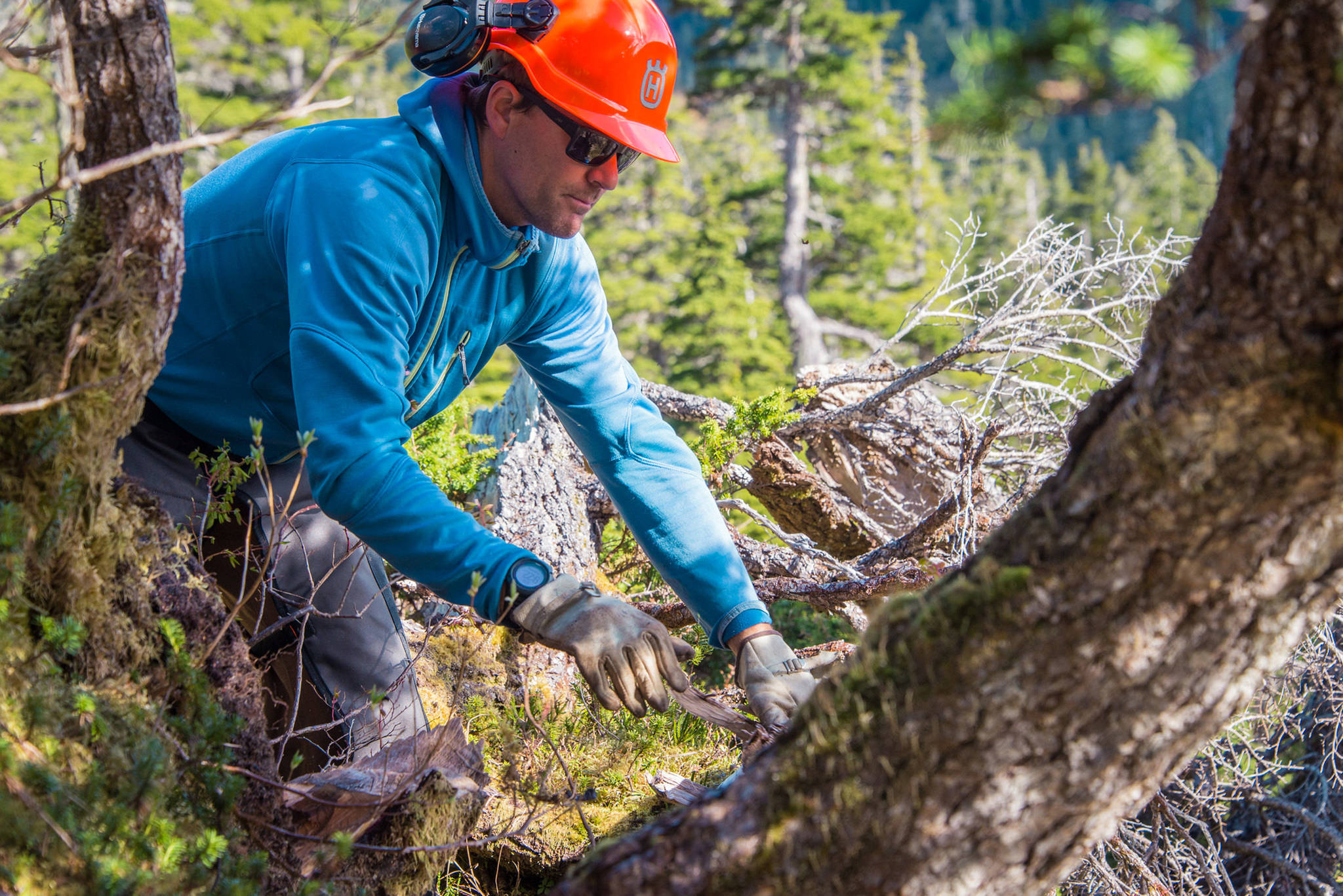It’s impossible to miss the peculiar pattern of spruce and hemlocks on the mountainside, especially when viewed from across Gastineau Channel.
The dense growth of the dark-green conifers covers most of the available surface of Mount Juneau, except for a slab running down the middle of peak, covered in leafy or barren alder trees. The segregated vegetation tells a detailed story about the large rock’s avalanche past that is being closely studied by Alaska and Montana scientists.
The University of Alaska Southeast, University of Alaska Fairbanks, U.S. Geological Survey and Alaska Climate Adaptation Science Center are combining forces to chronicle Juneau’s avalanche history through the labor-intensive work of dendrochronology, or the study of tree rings.
“That gives you information not only about the timing of large magnitude avalanches but also the spatial extent of them in a particular path,” said UAS Professor of Environmental Science Eran Hood, one of the main researchers involved in the project that began last summer, along with Gabriel Wolken of UAF and State of Alaska Division of Geological and Geophysical Surveys and Erich Peitzsch and Danny Stahle of the USGS.
pic
The study will provide the most comprehensive chronology of Juneau-area avalanches to date, providing insights on the magnitude and spatial extent of slides over the last several hundred years. The sites — seven in total from Snettisham to Kensington Gold Mine — were chosen because of their proximity to urban areas or some infrastructure.
Tree rings bear all kinds of “signals” from physical disturbances like avalanches, landslides or rock falls, said Peitzsch, a physical scientist with the USGS Northern Rocky Mountain Science Center. Scars — the most obvious type of signal — look brown while a separate signal known as reaction wood appears as bigger rings on one side of the tree.
“Let’s say maybe the tree is now tilted a little bit, so what the tree is going to do is put more wood on the downhill side to sort of buffer that impact,” Peitzsch said.
This summer, the research team collected around 400-500 “cookies,” or tree trunk slices. The cross-sections were extracted using chainsaws and could only be taken from dead-and-down trees. The sampling of dead trees makes finding its exact lifespan difficult, but not impossible.
“We can count how old the tree is but we don’t actually know when that tree lived in time,” Peitzsch said. “And so what we’ll do is go outside the avalanche path, we’ll actually get cores from living trees.”
Peitzsch said they can then match the tree rings widths between the dead and living trees — a process known as crossdating — in order to date the tree rings from dead trees.
Using the information gleaned from tree rings, Wolken will create tailored avalanche models for the Juneau area. The UAF professor is also collecting snow depth information from the sites using LIDAR (Light Detection and Ranging) to further improve the models’ weight.
“This is really critical to get this detailed information on these avalanche paths so that we can calibrate our regional-scale snow-avalanche hazard modeling,” Wolken said.
Wolken expects this kind of information will only become more vital in the future.
“As the climate changes we would anticipate changes in precipitation — the amount of precipitation, the intensity of precipitation — in different areas,” Wolken said. “And unless we have a firm grasp on what the conditions are currently we won’t really have much in the way of anticipating how these changes could impact avalanches in Alaska and Alaska’s vulnerability to some of these future avalanche events.”
The work will continue throughout the winter and into next summer.
“This all fits together really nicely and it’s just really a great place for this to happen,” Wolken said. “Not only does Juneau desperately need more avalanche hazard information, but it’s also just a really good place to do this study since it has such an impact on the urban environment around Juneau.”
Unraveling the History of Avalanches in Juneau from IARC Group on Vimeo.
• Contact sports reporter Nolin Ainsworth at 523-2272 or nainsworth@juneauempire.com.

